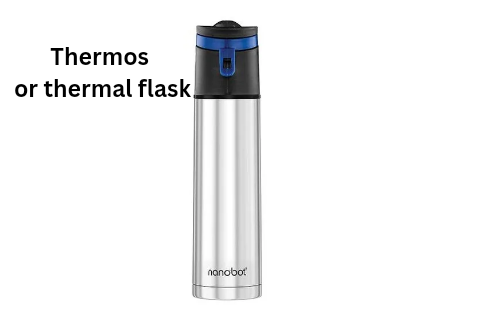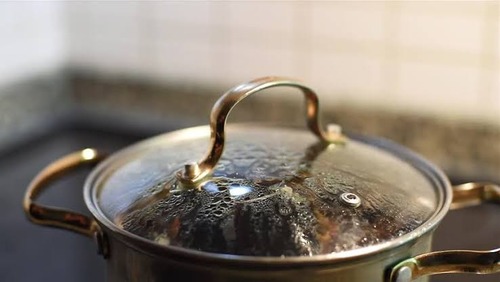A thermodynamic system is defined as the quantity of matter or region of space in universe that is being studied or observed. Everything surrounding the system is called surroundings or environment. This system is seperated from the surroundings by system boundary. These boundaries can be real or imaginary and can be fixed or movable.
There are three main types of thermodynamic systems:
- Isolated System.
- Closed System.
- Open System.
Isolated system:
In an isolated system there is no exchange of energy or matter with the surroundings.
Example : An example of an isolated system is a thermos bottle (also known as a vacuum flask).

In an ideal thermos bottle, the walls are designed to prevent the transfer of heat and matter between the contents of the bottle and the external environment. This means that whatever is inside the thermos (hot or cold liquid, for instance) remains at a nearly constant temperature for an extended period, as there is minimal heat exchange with the surroundings.
Can we achieve perfect isolation?
In reality, perfect isolation is impossible, but a thermos bottle closely approximates an isolated system.
Closed System:
In a closed system there is Exchange of energy but not matter with the surroundings.
Example:The example of closed system is water boiling in a closed tight container.

When we boil water with a closed lid, the heat can exchange but matter cannot.some of the other examples include sealed steam radiator.In this case, water inside the radiator is heated, turning into steam, which then radiates heat to warm up a room. While energy (in the form of heat) is transferred from the radiator to the room, the mass of water and steam remains constant because the radiator is sealed and does not allow the exchange of matter with its surroundings.
Open System:
In an open system there is Exchange of both energy and matter with the surroundings.
Example: An example of an open system is a boiling pot of water.

In this scenario, heat (energy) is transferred from the stove to the pot, causing the water to boil and evaporate. The steam (water vapor) can escape into the atmosphere, demonstrating the exchange of both energy and matter with the surroundings. This continuous exchange makes the boiling pot of water an open system.
In the above case,water vapour escaped from the pot to atmosphere is considerd as matter.
Control Volume
A control volume is the fixed region in space in which thermodynamic study of mass transfer and heat transfer is examined.
Example: Some of the examples of control volume systems include Turbine,Heat exchanger and compressor.
The concept of a control volume is fundamental in the analysis of fluid flow systems and helps in applying the conservation laws (mass, momentum, and energy) to engineering problems.
